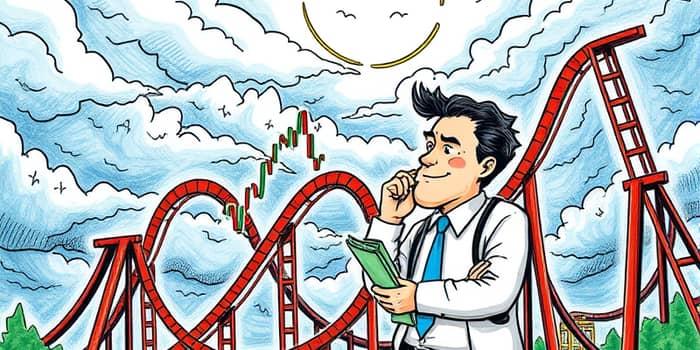
Market volatility can challenge even seasoned investors, sparking fear and hesitation. Yet, turbulent times often present the most rewarding opportunities for disciplined savers. By embracing dollar-cost averaging (DCA), you can transform market chaos into a pathway toward steady, long-term growth.
Rather than attempting to time market peaks and troughs, DCA lets you invest fixed amounts at regular intervals. This method automatically averages your purchase price, smoothing out short-term price swings and reducing the psychological burden of deciding when to buy.
At its core, DCA involves committing a specific sum—weekly, biweekly, or monthly—into selected stocks, mutual funds, or ETFs. Instead of deploying a large lump sum all at once, you spread investments over time. When prices dip, your set amount buys more shares; when prices rise, it buys fewer.
This strategy produces an average cost per share that often lies below the peak market price. Over extended periods, DCA can dampen the effect of volatility, ensuring you never invest your entire capital at a market high.
Investing during volatile markets can trigger emotional reactions—fear of loss or greed during rallies. DCA tackles this head-on by making investments automatic, emotion-free contributions. When you remove active decision-making, you avoid panic selling in downturns and FOMO buying in bubbles.
By fostering a routine of regular contributions, DCA also builds consistent investing discipline over time. You grow comfortable with market cycles and learn to trust the process, rather than second-guessing every market move.
While historical data often favors lump-sum investing in steadily rising markets, DCA shines in unpredictable or declining environments. Here’s a side-by-side look:
Studies reveal that lump-sum investing may yield higher returns when markets trend upward, simply because more capital is at work earlier. However, for risk-averse investors, DCA offers reduced short-term downside risk and a buffer against regret.
For instance, an investor using DCA during a six-month period of fluctuating prices might accumulate slightly fewer shares than with a lump-sum approach, but at a lower average price. When markets rebound, that lower cost basis can translate into faster recovery and outsized gains in early rebounds.
To harness the full power of dollar-cost averaging, follow these practical steps:
No strategy is without trade-offs. DCA excels in providing emotional relief and risk management, yet it may underperform a lump-sum approach in strong bull markets. Understanding both sides helps tailor your plan to personal goals and market conditions.
Amid unpredictable markets, dollar-cost averaging stands out as a rational, structured approach. It replaces guesswork with routine, fear with confidence, and market swings with disciplined progress. Whether you’re a new investor or a seasoned saver, DCA can serve as your compass through market turbulence.
By committing to regular investments and trusting the process, you position yourself to benefit from every market cycle. Embrace dollar-cost averaging today, and transform volatility into an opportunity for consistent wealth creation.
References













